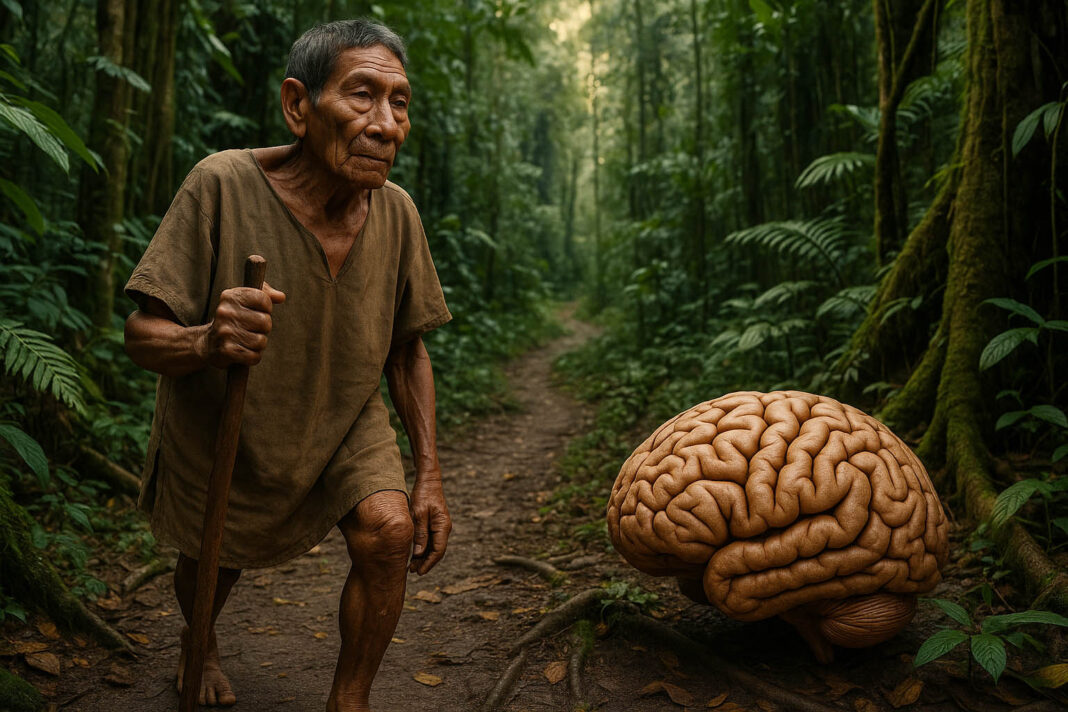The Tsimane: Living Proof of Longevity
Buried deep in the Bolivian jungle, the Tsimane tribe might just hold the secret to living longer and healthier. These folks are the last of their kind, living a raw, subsistence lifestyle of hunting, foraging, and farming. What’s striking is their health stats—no cases of Alzheimer’s among their 16,000 members. That’s right, zero. Their brains are 70% less atrophied than those of their age in industrialized countries. Bolivian doctor Daniel Eid Rodríguez, who’s been part of the research team, couldn’t hide his amazement: ‘We found zero cases of Alzheimer’s among the entire adult population—it is remarkable,’ he told the BBC [source: BBC].
Their secret? Constant movement and a diet that’s the opposite of what we’re used to in the West. They spend less than 10% of their daylight hours sitting around, compared to our 54%. And forget about processed junk, alcohol, and smokes—their diet is lean and mean, with only 14% of calories from fat (versus our 34%) and a whopping 72% from carbs. They hunt for their protein—birds, monkeys, fish—and they don’t mess around with frying their food. This isn’t just a lifestyle; it’s a masterclass in staying sharp and spry.
Heart Health: Tsimane vs. The Modern Man
The Tsimane aren’t just dodging Alzheimer’s; they’re also sporting some of the healthiest hearts around. A study published in The Lancet in 2017 found that only 65% of Tsimanes over 40 had signs of coronary artery calcium (CAC), compared to 80% of Americans. Professor Hillard Kaplan from the University of New Mexico, who’s been studying these guys for decades, put it bluntly: ‘A 75-year-old Tsimane’s arteries are more like a 50-year-old American’s arteries’ [source: The Lancet].
But let’s not get too romantic about their lifestyle. It’s tough out there—constant movement, high pathogen levels, and inflammation from battling infections. Yet, it’s this very battle that might be boosting their long-term health. And despite their impressive heart and brain health, life’s still a gamble for them. Their life expectancy was barely 45 when Kaplan started his study, now it’s crept up to 50. It’s a reminder that while they’re onto something with their lifestyle, it’s not a silver bullet.
Challenges and Changes: The Tsimane Today
Life for the Tsimane isn’t static, and recent changes are challenging their traditional ways. In 2023, forest fires torched nearly two million hectares of their habitat, driving away the animals they hunt. Hunting’s become tougher, and that’s a big deal for a community that relies on it for survival. They’re also starting to use outboard motors on their boats, which means less rowing—one of their most strenuous activities.
But these folks are resilient. Take Juan, a 78-year-old Tsimane, who told the BBC, ‘Now the most difficult thing is my body. I don’t walk far any more… it will be two days at most.’ And Hilda, who’s 81, isn’t fazed by death: ‘I’m not afraid of dying because they’re going to bury me and I’m going to stay there… very still.’ Their straightforward approach to life’s challenges is something we could learn from.
Lessons for the Modern Man
So, what can you, a modern man, take away from the Tsimane? First, move more. Their active lifestyle keeps their brains and hearts in top shape. You don’t need to hunt for your dinner, but hitting the gym, taking long walks, or even just standing more can make a difference. Second, rethink your diet. Less fat, more carbs, and no processed junk. It’s not about going full caveman, but cutting down on the crap that clogs your arteries.
And finally, embrace resilience. The Tsimane face their challenges head-on, with a calm acceptance of life’s ups and downs. In our world of constant stress and anxiety, that’s a lesson worth learning. So, get up, get moving, eat right, and face life like a man. Your heart and brain will thank you.
Key Facts Worth Knowing
- •💡 The Tsimane tribe in Bolivia has zero reported cases of Alzheimer’s among their 16,000 members.
- •💡 Only 14% of the Tsimane’s caloric intake comes from fat, compared to 34% in the US.
- •💡 The Tsimane spend less than 10% of their daylight hours in sedentary activities, compared to 54% in industrialized populations.
- •💡 A study in The Lancet found that 65% of Tsimanes over 40 have signs of coronary artery calcium, compared to 80% of Americans.
- •💡 The Tsimane’s life expectancy has risen from 45 to 50 years, despite challenges from their environment.



